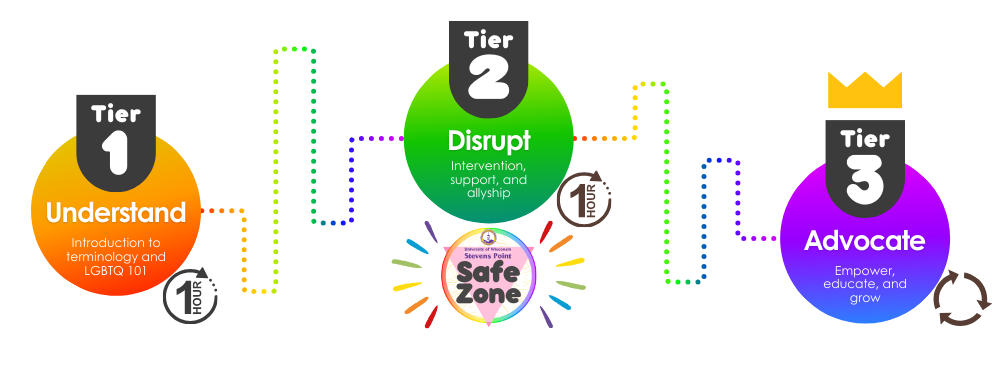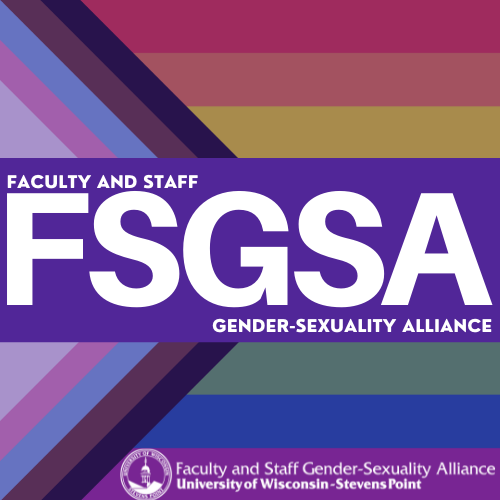Safe Zone Training
The Faculty and Staff Gender-Sexuality Alliance (FSGSA), in partnership with the Center for Inclusive Teaching and Learning (CITL), provides Safe Zone training sessions to the faculty and staff members of UW-Stevens Point campuses. The Safe Zone training for faculty and staff is separated into different tiers based on the content covered:
 For individuals who have:
For individuals who have:
- Previously attended a Safe Zone training at UWSP or another campus;
- Participated in a similar training outside of a university setting; or
- Have lived experience or a scholarly background in the experiences of LGBTQ+ individuals;
You may choose to complete an assessment in lieu of the Tier 1 training to be reviewed by a Safe Zone facilitator. Interested individuals can complete the
Safe Zone pre-assessment.
Tier 2 training is required to receive the Safe Zone placard and complete the initial components of the Safe Zone training. Tier 3 of the Safe Zone training requires on-going education in the form of event attendance, self-education, and/or campus service related to equity, diversity, and inclusion. FSGSA recommends re-completion of the Tier 2 training every three years.
Upcoming Safe Zone Sessions For UWSP Faculty and Staff
 Watch for information about scheduled training sessions in the Spring 2026 semester.
Watch for information about scheduled training sessions in the Spring 2026 semester.
NOTE: For virtual sessions, facilitators will email a Zoom link to participants prior to the session.
CITL Safe Zone training for UWSP faculty and staff is an introduction to the knowledge, skills, and dispositions we need to create Safe Zone spaces.
Each of us has an identity based on our background, including our gender, sexuality, race/ethnicity, age, mental health, disability, education, socioeconomic status, veteran status, etc. This combination is unique for each of us. The intersectionality of all facets of our lived experience creates our unique identities. Unfortunately, many backgrounds and identities have been marginalized, stigmatized, and sometimes targeted with violence and oppression. We create Safe Zone spaces to allow people to be their true selves, without fear of such threats.
By completing Safe Zone training and displaying the Safe Zone Placard, you open your door as a supportive and safe ally. You communicate that others can openly confide in you about their identities and experiences. You don't need to be an expert to display the placard. However, your placard indicates your commitment to ally-ship with the LGBTQ+ community. We'll explore what ally-ship means in the Safe Zone training session.
Submit a training request if you are interested in a session for your department or unit or if the scheduled sessions do not fit your schedule.
Learning Outcomes
If you bring sufficient ability and apply reasonable effort to this workshop, you will improve your abilities to:
- Use inclusive language about gender and sexuality
- Describe the differences between gender identity, gender expression, sex, and sexuality
- Identify challenges faced by trans, non-binary, and non-heterosexual folks
- Help create more inclusive environments by being an ally to LGBTQ+ folks
